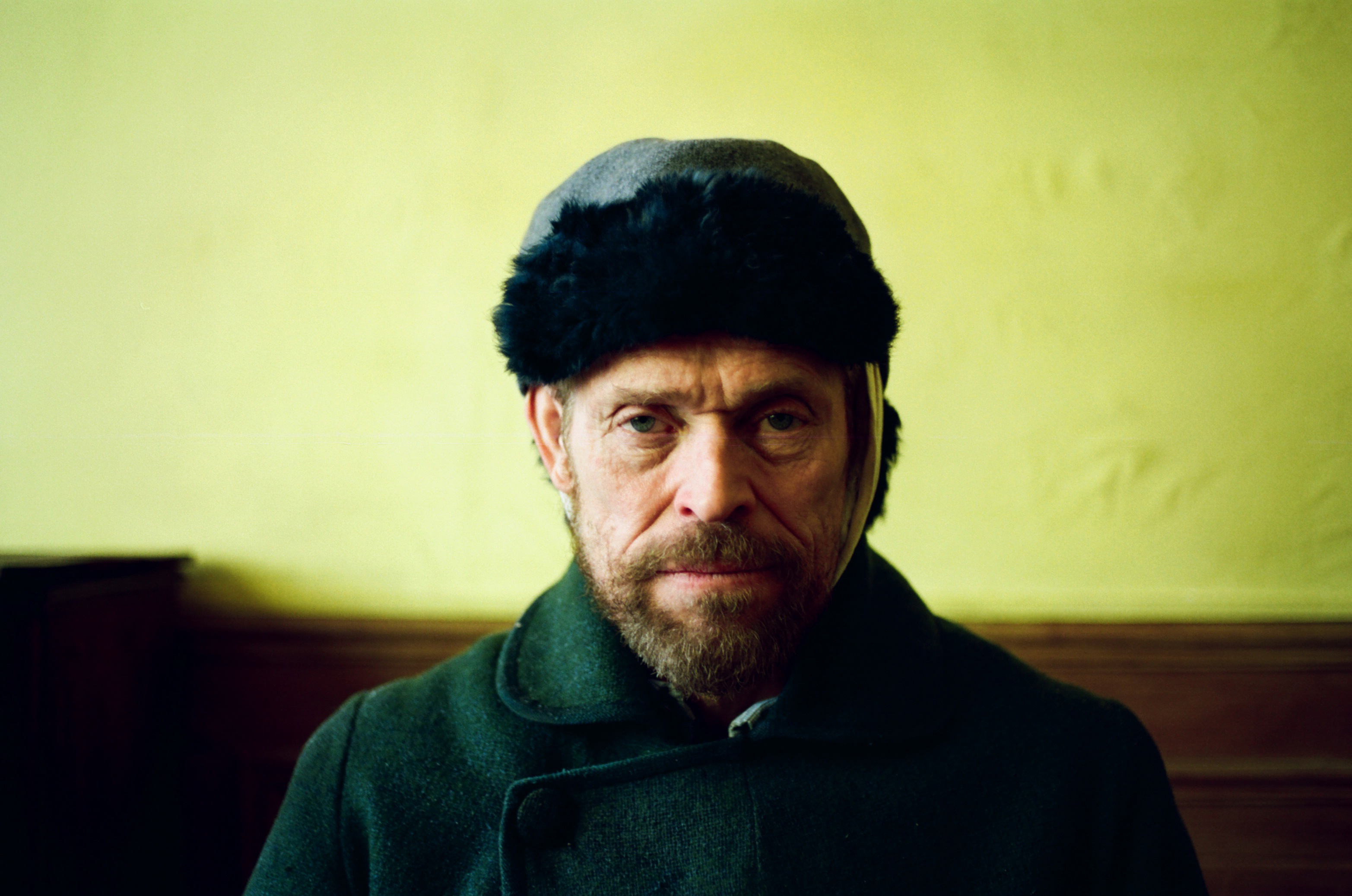
Three-time Oscar nominee Willem Dafoe is magnificent in his portrayal of late painter Vincent van Gogh in At Eternity’s Gate.
Vincent van Gogh (Willem Dafoe) is an interesting art figure. While he made his mark as a painter in the Post-Impressionism movement, he wouldn’t see fame during his lifetime. Even though his fame came after his death, there’s something fascinating about seeing his story play out on the screen. This story comes through largely on the heels of Willem Dafoe’s performance. Dafoe captures the essence of the artist but there’s some questions. The artist was 37 years old when he died while Dafoe is north of 60. Take this as you will but I’m wondering if they considered casting someone who was closer in age.
We’re introduced to the artist during what would be the final years of a very short life. This is when van Gogh met the likes of artist Paul Gauguin (Oscar Isaac). Aside from his brother Theo (Rupert Friend), Gauguin is the closet friend that van Gogh appears to have during the film. If not for Gauguin, van Vogh might never have moved to Arles, France in 1888. The friendship with Gauguin comes to an end–of course–when van Gogh cuts off his left ear. All of this said, the film imagines conversations that the two might have had about their ideas of what makes art…well, art.
The end of the film is another area where there are dramatic liberties. Records have shown that van Gogh shot himself in the chest but the film depicts two boys shooting him in the stomach instead. The film’s postscript even mentions that he never told anyone about the boys. A fascinating postscript at the film notes the discovery of an account ledger containing van Gogh’s drawings in 2016. While it’s likely that van Gogh had drawings in sketchbooks and what not, the van Gogh museum disputes the authenticity in a statement. There’s more on the claims here.
In director Julian Schnabel’s own words, At Eternity’s Gate is not a straight biopic in the traditional sense. While the film does tell Vincent Van Gogh’s story, the script makes some dramatic licenses. This isn’t uncommon for historical biopics especially when the chief subject has been dead for well over a century. Per Schnabel, the film is based on “Vincent van Gogh’s letters, common agreement about events in his life that parade as facts, hearsay, and scenes that are just plain invented.”
Schnabel’s experiences as a painter help to inform his idea of how van Gogh may have lived. This doesn’t stop me from questioning some of what we end up seeing on the screen. My chief complaint comes down to the headache-inducing decision to blur the bottom half of the screen. I don’t know if this is because of something that filmmakers learned about Vincent van Gogh’s eyesight. Even still, we see the effects of the split lens when van Gogh is on the screen and not from his point of view. This was enough to make me want to turn my eyes away from the screen for fear of a migraine. If you’re prone to headaches because of blurred vision, please keep this in mind!
Willem Dafoe’s performance is great but At Eternity’s Gate isn’t without headache-inducing decisions that serve to hurt the film’s purpose.
DIRECTOR: Julian Schnabel
SCREENWRITERS: Jean-Claude Carrière, Julian Schnabel, Louise Kugelberg
CAST: Willem Dafoe, Rupert Friend, Mads Mikkelsen, Mathieu Amalric, Emmanuelle Seigner, Anne Consigny, Amira Casar, Niels Arestrup, and Oscar Isaac





